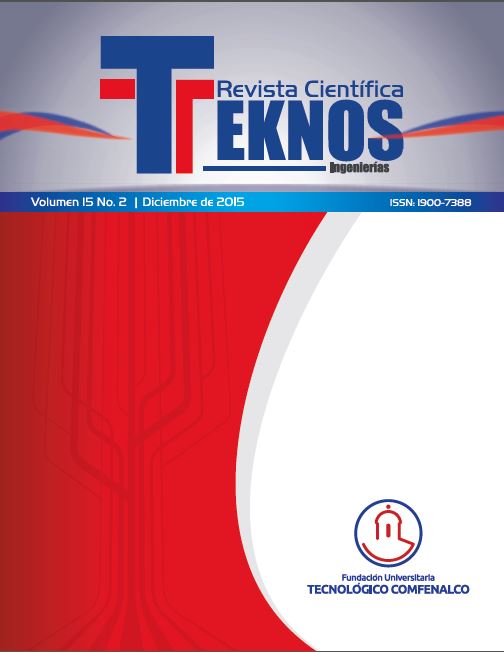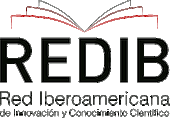Personalization in collaborative learning supported by computer through agent-based systems
DOI:
https://doi.org/10.25044/25392190.487Keywords:
aprendizaje colaborativo soportado por computadoras, roles de equipo, e-tutores, sistema basado en agentes, roles de e-tutores.Abstract
In systems for Computer Supported Collaborative Learning is not enough to organize students into groups. The successful in a collaborative experience depends on (among other things) the roles that students and teachers are able to manifest during the collaborative dynamic. In this paper two agent-based systems specially designed are presented. The first is focused both monitoring team roles played by students in the dynamics of collaboration, such as automatically intervene with corrective action when these roles are not properly displayed. The second agent-based system aimed at detecting group conflicts that require teacher intervention to resolve, and to carry out the training of those teachers in the demonstration of the proper roles to resolve these conflicts. Both systems are currently under development for further experimental validation with real students and teachers.Downloads
References
Bales, R., Cohen, S., y Williamson, S. (1979). Symlog: A system for the multiple level observation of groups. The Free Press.
Bales, R. (1950). A set of categories for the analysis of small group interaction. American Sociological Review, 15(2), 257-263.
Belbin, M. (2001). Managing without Power. Oxford: Butterworth-Heinemann.
Barker, P. (2010). Introduction. Electronic Performance Support Using Digital Technology to Enhance Human Ability. Inglaterra: Gower.
Barros, B. y Verdejo, M. (2000). Analysing student interaction processes in order to improve collaboration. The DEGREE approach. International Journal of Artificial Intelligence in Education, 11, 221-41.
Belbin, M. (1996). Team Roles at Work (2nd Ed.). Oxford: Butterworth-Heinemann.
Chen, W. (2006). Supporting teachers' intervention in collaborative Knowledge building. Journal of Network and Computer Applications, 29, 200-215.
Constantino-González, M., Suthers, D., y Escamilla de los Santos, J. (2003). Coaching Web-based Collaborative Learning based on Problem Solution Differences and Participation. International Journal of Artificial Intelligence in Education, 13, 263-299.
Costaguta, R., Amandi, A., y García, P. (2011). Using Agents for Training Students Collaborative Skills. IEEE Latin America Transactions, 9(7), 118-1124.
Delgado, A., Olguín, C., y Ricarte, I. (2001). Monitoring Learners Activities in a Collaborative Environment. Proc. 7th IEEE International Workshop on Groupware. Alemania.
Godoy, D., Schiaffino, S., y Amandi, A. (2004). Interface agents personalizing Web-based tasks. Special Issue on Intelligent Agents and Data Mining for Cognitive Systems, Cognitive Systems Research Journal, 5 (3), 207–222.
Hughes, S., Wickersham, L., Ryan-Jones, D., y Smith, S. (2002). Overcoming Social and Psychological Barriers to Effective On-line Collaboration. Educational Technology & Society, 5(1), 86-92.
Kukulska-Hulme, A. (2004). Do Online Collaborative Groups Need Leaders? Online Collaborative Learning: Theory and Practice, Information Science Publishing, 262-280.
Krippendorff, K. (2004). Content analysis: an introduction to its methodology., Filadelfia: SAGE Publications.
Liao, J., Li, Y., Chen, P., y Huang, R. (2008). Using Data Mining as Strategy for Discovering User Roles in CSCL. 8th IEEE Internatinal Conference on Advanced Learning Technologies. España.
Onrubia, J., y Engel, A. (2012). The role of teacher assistance on the effects of a macro-script in collaborative writing tasks. International Journal of Computer Supported Collaborative Learning, 7(1), 161-186.
Orvis, K. y Lassiter, A (2006). Computer-Supported Collaborative Learning: The Role of the Instructor. Teaching and learning with virtual teams, Information Science Publishing, 158-179.
Poole, M., y Roth, J. (1989). Decision Development in Small Groups V: Test of a Contingency Model. Human Communication Research, 15(4), 549-589.
Santana-Mansilla, P., Costaguta, R., y Missio, D. (2011). Habilidades de e-tutores en grupos colaborativos. Proc. IV Simp. Int. de Investigación, La investigación Aplicada en la Universidad: Experiencias innovadoras en investigación aplicada. Argentina: Jujuy.
Santos, O., Barrera, C., Gaudioso, E., y Boticario, J. (2003). ALFANET: An adaptive e-learning platform. Proc. 2nd International Meeting on Multimedia and Information and Communication Technologies in Education, 1938-1942.
Schellens, T, Van Keer, H., Valcke, M., y De Wever, B. (2005). The Impact of role Assignment as Scripting Tool on Knowledge Construction in Asynchronous Discussion Groups. ACM Conference on Computer Support for Collaborative Learning. Taiwan.
Schwarz, B., y Asterhan, C. (2011). E-Moderation of Synchronous Discussions in Educational Settings: A Nascent Practice. Journal of the Learning Sciences, 20(3), 395-442.
Soh, L., Khandaker, N., y Jiang, H. (2006). I-MINDS: A Multiagent System for Intelligent Computer-Supported Collaborative Learning and Classroom Management. International Journal of Artificial Intelligence in Education, 28 (2), 119-151.
Soller, A. (2001). Supporting Social Interaction in an Intelligent Collaborative Learning System. International Journal of Artificial Intelligence in Education, 12, 40-62.
Soller, A., Martínez, M.., Jermann, P., & Muehlenbrock, M. (2005). From Mirroring to Guiding: A Review of State of the Art Technology for Supporting Collaborative Learning. International Journal of Artificial Intelligence in Education, 15(4), 261-290.
Strijbos, J., de Laat, M., Martens, R., y Jochems, W. (2005). Functional versus Spontaneous Roles during CSCL. ACM Conference on Computer Support for Collaborative Learning. Taiwan.
Suh, H., y Lee, S. (2006). Collaborative Learning Agent for Promoting Group Interaction. ETRI Journal, 28(4), 461-474.
Sulčič, V., y Sulčič, A. (2007). Can Online Tutors Improve the Quality of E-Learning?. Issues in Informing Science and Information Technology, 4, 210-210.
Tchounikine, P., Rummel, N., y McLaren, B. (2010). Computer Supported Collaborative Learning and Intelligent Tutoring Systems. Advances in Intelligent Tutoring Systems, Springer, 447-463.
Downloads
Published
How to Cite
Issue
Section








